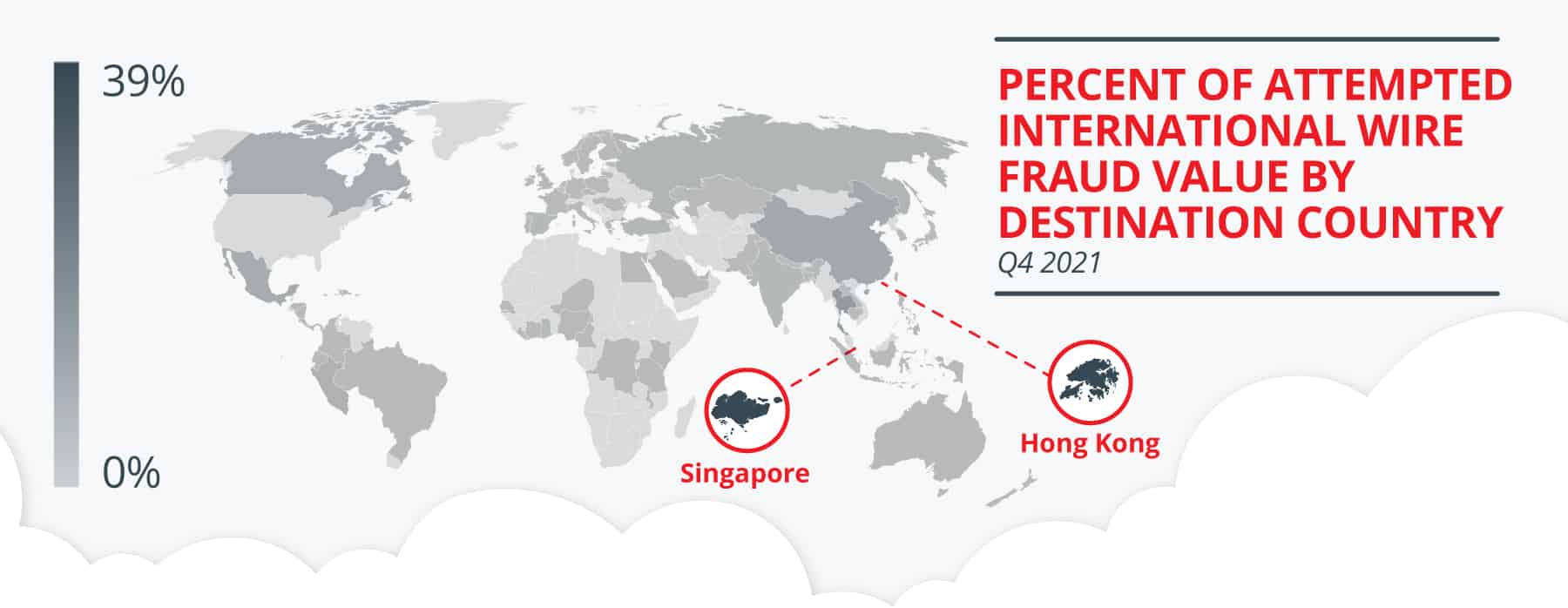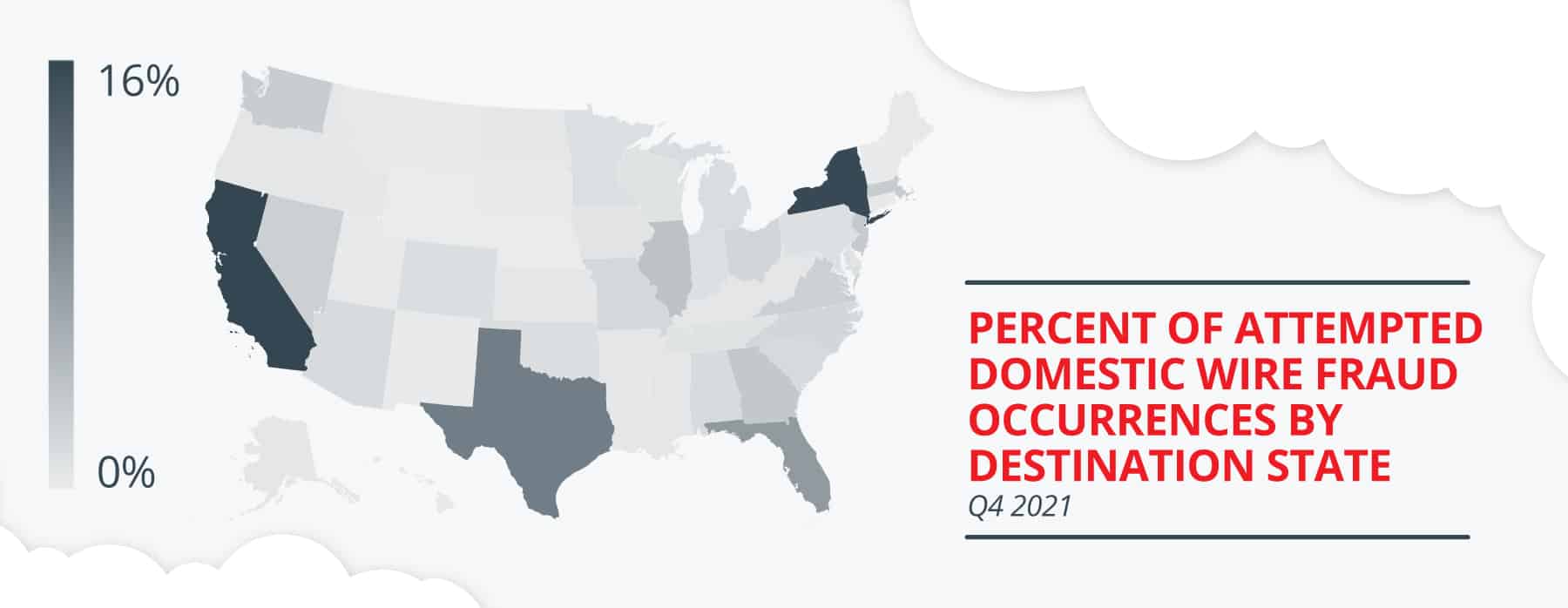
The high dollar value and irrevocable nature of many wire transfers make them inherently risky and a prime target for criminals. With fraudsters unrelenting, financial institutions must remain informed of growing wire fraud threats, both domestically and internationally.
Our experts have been closely monitoring domestic and international wire fraud trends through the Verafin Cloud, gathering insights for our Quarterly Cloud Insights: Wire Fraud Benchmarking Report for Q2 2022. In this blog, we highlight increasing wire fraud threats in the U.S. and overseas — and the importance of being prepared to effectively combat domestic and international wire fraud.
Rising U.S. Threats
Consortium-based insights from the Verafin Cloud show that attempted domestic wire fraud (fraud involving wire payments with a destination within the U.S.) is on the rise. When measured by the median, the typical value of a domestic wire fraud attempt increased nearly 68% from Q2 2020, reaching $12.5K in Q4 2021. The total value of attempted domestic wire fraud observed in the Cloud in Q4 2021 was $51M.
Our analysis also found that in Q4 2021, nearly 50% of attempted domestic wire fraud occurrences were destined for one of four states: California, Texas, Florida, or New York. For Q3 2021 to Q4 2021, major increases in volumes of attempted occurrences were noted for Massachusetts, Nevada, and Washington.
Wire fraud cccurrences are highly correlated to population densities. Many occurrences of wire fraud are linked to Authorized Push Payment (APP) fraud such as romance scams or Business Email Compromise (BEC). Almost every case of wire fraud requires a mule to help facilitate it; mules receive fraudulent funds and distribute them to the fraudster, and the mule may be a victim, such as a vulnerable individual targeted by fraud scams. As such, states with large populations tend to be the receiving location for domestic wire fraud occurrences. This is evident in the Report where we see California, New York, Texas and Florida as the states receiving the greatest number of fraudulent wire payments.
Emerging International Trends
International attempted wire fraud (fraud involving wire payments with a destination outside the U.S.) is also on the rise. When measured by the median, the typical value of a wire fraud attempt increased 39% from Q2 2020 to Q4 2021. The total value of attempted international wire fraud observed in the Cloud in Q4 2021 was $13M.
Our experts also identified emerging trends for the top destinations for wire fraud attempts, with Singapore, Hong Kong, and Thailand together accounting for 70% of international wire fraud attempts by value for Q4 2021. Canada also saw a significant surge in attempted value of fraudulent wire transfers — a 245% increase from Q3 2021 to Q4 2021.

Efficient & Effective: Fighting Wire Fraud with Verafin
APP-based wire fraud continues to be a challenge for the industry with international crime rings targeting your customers. Financial institutions need to consider transaction monitoring solutions that can effectively identify APP-based fraud scams without impacting the speed of payments. Traditional solutions can monitor customers and transactions for expected activity, but understanding the complete picture, including the risk associated with transacting counterparties, will determine how efficient and effective your wire fraud program will be.
Verafin uses data from over 2100 financial institutions in the Cloud to better understand the risk linked to the counterparty of a payment. With a robust data set, including over 300 million counterparty profiles and growing every day, we can increase alert risk when we suspect potential mule activity, or explain away false positive alerts by determining that a new wire recipient is safe. With consortium-based counterparty analysis, Verafin protects your critical payment channels and reduces the risk to your customers and your institution.
For further wire fraud statistics, emerging trends, and key insights for your institution, download our Quarterly Cloud Insights: Wire Fraud Benchmarking Report for Q2 2022.



